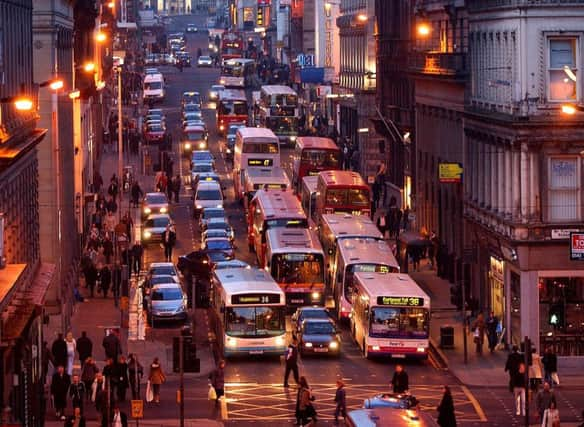Comment: Time we did more to meet transport targets


A lost decade, was how transport campaign group Transform Scotland described the outcome of the latest review of the national transport framework.
The national review published on 21 January showed levels of walking and public transport down, and car traffic up.
Advertisement
Hide AdAdvertisement
Hide AdScotland is not on track with its transport targets, and the following day, when the Committee on Climate Change visited Edinburgh, they reported that Scotland needed to do more on transport.
As the largest professional body representing the transport sector in Scotland CILT is keen to work with government to help it focus its “lens” at the practical changes which will achieve prosperity, fairness and participation.
These aims align with the day to day activities of our members helping people to get to work, moving goods and building a better connected and more equitable society.
Government wants to be judged on outcomes for improved journey times and connections, reduced emissions and the improved quality, accessibility and affordability of transport.
Rail passengers and cyclists can report some improvements in journey times and quality over the last ten years, however for most others journey times have been rising, and air quality has been declining, so the campaigners rightly highlight the lost decade.
It seems that government has been better at stating policy aims than turning these aims into results. Weak partnership delivery has probably been the greatest obstacle to better transport. The lack of priority for people movement, rather than car movement, on the roads has been hurting the public transport industry.
Much more bus priority is needed to ensure faster bus journey times and much higher quality walking routes are needed connecting homes and local destinations including bus stops and rail stations. Constrained delivery times for lorries have been adding to freight costs. Only partnership working can deliver the breadth of participation needed for successful solutions.
So how can this barrier to delivery be overcome?
Most Scots know that they can already buy some smart integrated tickets, such as buying print at home or mobile tickets for parking with an air ticket purchase.
Advertisement
Hide AdAdvertisement
Hide AdHowever, rail and bus have fallen behind and will continue to do so without a new more flexible approach towards paying for public transport. The prospects for employers or shops to provide as many free smart bus tickets as free parking spaces for their customers are currently very slim.
The new strategy explains how Scotland’s new legislation, including the Community Empowerment Act, can help to offer a more participative approach. More action on local social priorities is certainly a promising step forward.
Perhaps more than any other sector transport will need to change fast over the next five years as industry restructures in response to changing technologies and new business models for a low carbon economy.
The Transport minister, Derek Mackay, hints at these bigger challenges by calling for a more thorough review of the National Transport Strategy after the 2016 Scottish Parliament election.
Scottish transport think tank STSG has published a report suggesting that these changes are very controversial and Scottish political parties only have until May to gain a democratic mandate for reform.
Without that mandate, the Scottish Government’s aspirations for an effective transport strategy could struggle after the election.
• Derek Halden, CILT Scotland